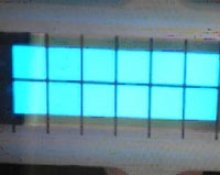Scientists at Pacific Northwest National Laboratory (PNNL) have created a blue organic light emitting diode (OLED) with an external quantum efficiency (EQE) of 11% at 800 cd/m2, exceeding their previous record EQE of 8%. The EQE of blue OLEDs is a major challenge in OLED technology development. This achievement is particularly notable since it was accomplished at a much lower operating voltage (6.2V) than previous demonstrations using similar structures, revealing the potential for much higher power efficiencies.
Small Molecules Provide Tough Challenge
Molecules that are small enough to emit the blue light necessary to produce a true white light spectrum are difficult to control and process into thin films. But the PNNL team has designed a new way to build large molecular structures from small fragments, which successfully combines the optical properties of small, wide bandgap molecules with the charge transporting and thin-film properties of larger molecules. By using organometallic phosphors, a photon can be emitted for every electron used so there is no wasted current, enabling low-voltage operation.
Linking Small Molecules is the Key
The breakthrough from PNNL involved designing a new process to link high triplet energy molecules to form a large surface area thin film. The linking units are inorganic phosphine oxides that facilitate charge transport of the organic unit but do not interfere with the blue light emission from the organometallic phosphor dopant. The first result to be reported using just the organic phosphine oxide demonstrated a new record short wavelength for an operating OLED of 335 nm (in the ultraviolet spectral region). This material also enables reduced voltage operation of OLEDs, which could have a major impact on device efficiency.
This breakthrough will enable an entire new class of improved efficiency OLED devices appropriate for SSL, and represents another important step toward DOE's long-term research goal of 160 lm/W in cost-effective, market-ready systems by 2025.
Return to Research Highlights


